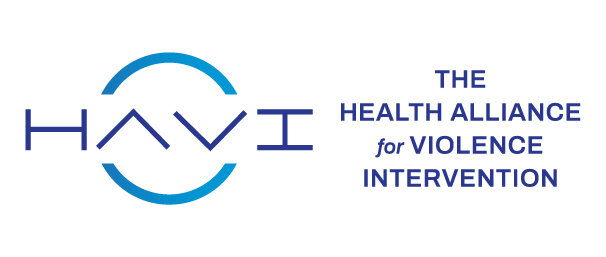What Are HVIPs
HVIPs are multidisciplinary programs that combine the efforts of medical staff with trusted community-based partners to provide safety planning, services, and trauma-informed care to violently injured people, many of whom are boys and men of color.
Engaging patients in the hospital, during their recovery, is a golden opportunity to improve lives and reduce retaliation and recidivism. The support network continues once patients are released with a pathway for outpatient care and other services.
How HVIPs Work
Instead of waiting for the patient to seek care, HVIPs bring trauma-informed care to the patient while in a hospital-based setting.
Because victims of interpersonal violence are at elevated risk for re-injury and violence perpetration, reaching them during these “teachable moments” is key to a successful hospital-based intervention. Several studies have demonstrated that individuals are particularly receptive to interventions that promote positive behavior change at these moments in healthcare settings.
Victims are provided links to community-based services, mentoring, home visits, follow-up assistance, and long-term case management during these interventions. HVIPs also work to identify and reduce risk factors, such as substance misuse and chronic unemployment, and promote protective factors, such as social support, job readiness, and educational attainment.
Key Components of Hospital-based Violence Intervention Programs (HVIPs)
Hospital-based violence intervention programs (HVIPs) are multidisciplinary programs that identify patients at risk of repeat violent injury and link them with hospital- and community-based resources aimed at addressing underlying risk factors for violence.
HVIPs alter risk trajectories by operating at multiple levels of the social ecology.
Intervention: Begins with a brief intervention in the emergency department or at the hospital bedside
Care: Followed by intensive, long-term community-based case management services in the months following the injury
Follow up Services: Crisis intervention, linkages to community-based services, mentoring, home visits, follow-up assistance, and long- term case management are provided by culturally-competent frontline workers who are from the same or similar communities as the clients they serve
Addressing the Social Determinants of Health: HVIPs elevate the issues of the revolving door of violence while addressing inequity and building partnerships with communities and survivors of violence.
Definition of Social Determinants of Health: Conditions in the places where people live, learn, work, and play affect a wide range of health risks and outcomes, according to the Centers for Disease Control and Prevention.
Importance of Violence Prevention Professionals
Many high-risk people who have suffered violent injuries are extremely distrustful of mainstream institutions like the healthcare and criminal justice systems. Using a trauma-informed approach, violence prevention professionals can often break through this distrust.
These highly trained paraprofessionals, who often come from communities in which they are working, can quickly engage violently injured patients and their families in the emergency department, at the hospital bedside, or soon after discharge.
After gaining trust and introducing the program, violence prevention professionals work with clients and their families to develop a plan for after their discharge that meets their immediate safety needs, provides services, and establishes goals. This form of intensive case management promotes survivors’ physical and mental recovery while also improving their social and economic conditions.
Bringing Health-Focused Violence Intervention to Scale
The HAVI’s national expertise helps position us to be a national voice in the movement to make healthcare more responsive to the needs of our most vulnerable patients.
Since the introduction of the first HVIP in the mid-1990s, our successful model has continued to proliferate across the country. To date, there are over 40 member programs across the U.S. and in three other countries, dozens of emerging programs, and a community of more than 350 practitioners, researchers, and policymakers who meet annually.
Together, we can reframe violence as a preventable healthcare issue that can be transformed through trauma-informed care in partnership with communities.
Hospital-based Violence Intervention Programs (HVIPs) - Ending violence through community and hospital partnerships
Video: Ending Violence through Community and Hospital-based Violence Intervention Programs (HVIPs)
Every year, millions of Americans arrive at the hospital with violent injuries. Trauma experts know that people who show up injured often need more than stitches to heal what hurts. That is why a growing number of hospitals and care providers across the nation are embracing Hospital-Based Violence Intervention Programs (HVIPs) to combat the revolving door of violent injury in communities. Learn more at www.thehavi.org. This product was produced by Futures Without Violence and the Health Alliance for Violence Intervention and was supported by grant number 2018-V3-GX-K039 awarded by the Office for Victims of Crime, Office of Justice Programs, U.S. Department of Justice. The opinions, findings, and conclusions or recommendations expressed in this product are those of the contributors and do not necessarily represent the official position or policies of the U.S. Department of Justice.


